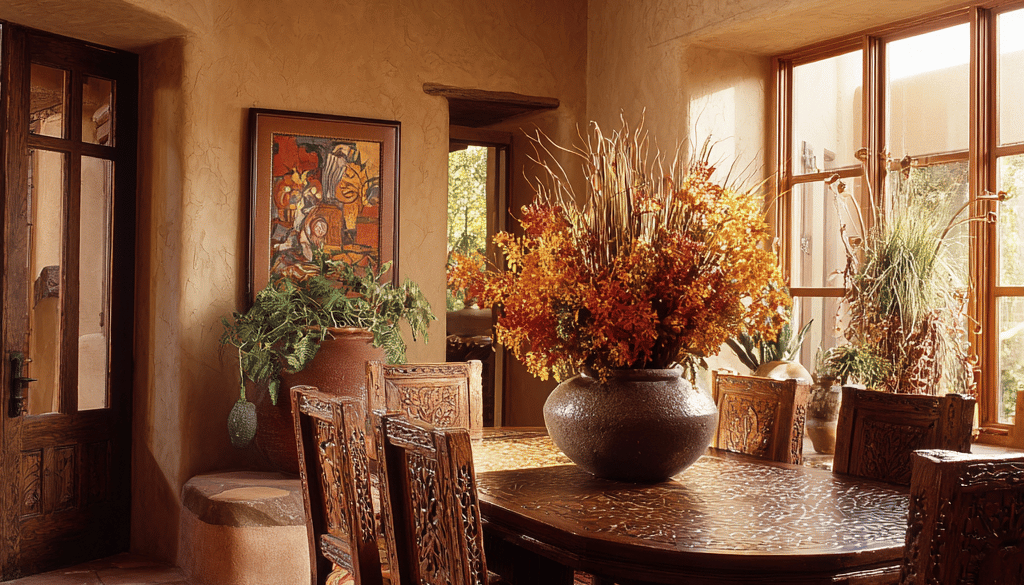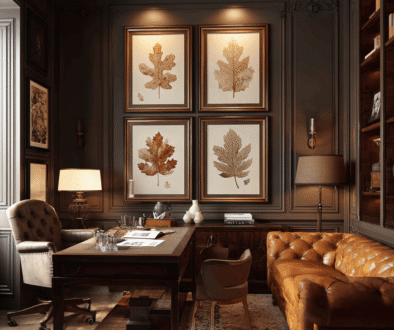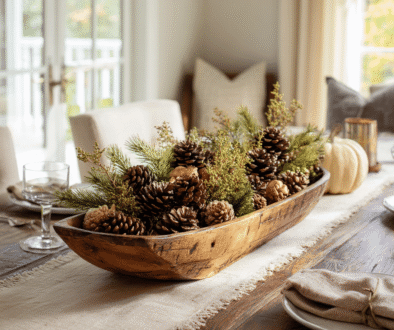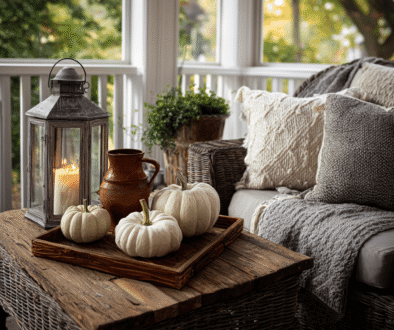DIY Fall Centerpieces Using Free Yard Treasures
I absolutely love when autumn arrives and my yard transforms into a treasure trove of decorating possibilities. Every year, I find myself wandering around my property with a basket in hand, collecting the most beautiful natural elements that nature has generously provided. Creating fall centerpieces with items from your yard isn’t just budget-friendly – it’s also incredibly rewarding and environmentally conscious.
There’s something magical about bringing the outdoors inside during this cozy season. The rich oranges, deep reds, and golden yellows of fall create the perfect palette for stunning table arrangements that rival anything you’d find in an expensive boutique. I’ve discovered that some of the most elegant centerpieces come from the simplest materials, and I’m excited to share my favorite techniques with you.
If you are looking to add some awesome fall shirts into your wardrobe this year, click on the images below. Use code FALL15 for a 15% discount on top of our current fall price while supplies last. That is a total of 40% OFF!!!! We ship to the USA and Canada.


Why Use Yard Materials for Fall Centerpieces?
Over the years, I’ve learned that yard-sourced materials offer unique advantages that store-bought decorations simply can’t match. First, they’re completely free, which means you can experiment without worrying about your budget. I’ve made countless centerpieces over the seasons, and I’ve never spent more than a few dollars on basic supplies like ribbon or candles.
The authenticity of natural materials creates an organic beauty that artificial decorations struggle to replicate. When I use real leaves, branches, and seed pods from my yard, each centerpiece becomes one-of-a-kind. The natural variations in color, texture, and shape ensure that no two arrangements are exactly alike.
Additionally, using yard materials connects your indoor decor to the outdoor landscape. I love how my dining room table reflects what’s happening outside my windows. It creates a seamless flow between indoor and outdoor spaces that makes my entire home feel more cohesive and grounded in the season.

Essential Tools and Supplies
Before I head out to collect materials, I always gather my basic supplies. You probably already have most of these items at home, which makes this project even more appealing from a cost perspective.
I keep a sturdy basket or bucket for collecting materials during my yard walks. Sharp pruning shears are essential for cleanly cutting branches and stems. I’ve learned that clean cuts help preserve materials longer and create more professional-looking arrangements.
A selection of containers is crucial for creating different styles of centerpieces. I collect glass vases, ceramic bowls, wooden boxes, and metal buckets throughout the year. Each container type creates a different mood and style, from rustic farmhouse to elegant traditional.
Other helpful supplies include floral foam for more structured arrangements, though I often prefer the natural look of loose arrangements. Wire cutters, hot glue gun, and various ribbons expand your creative possibilities significantly.
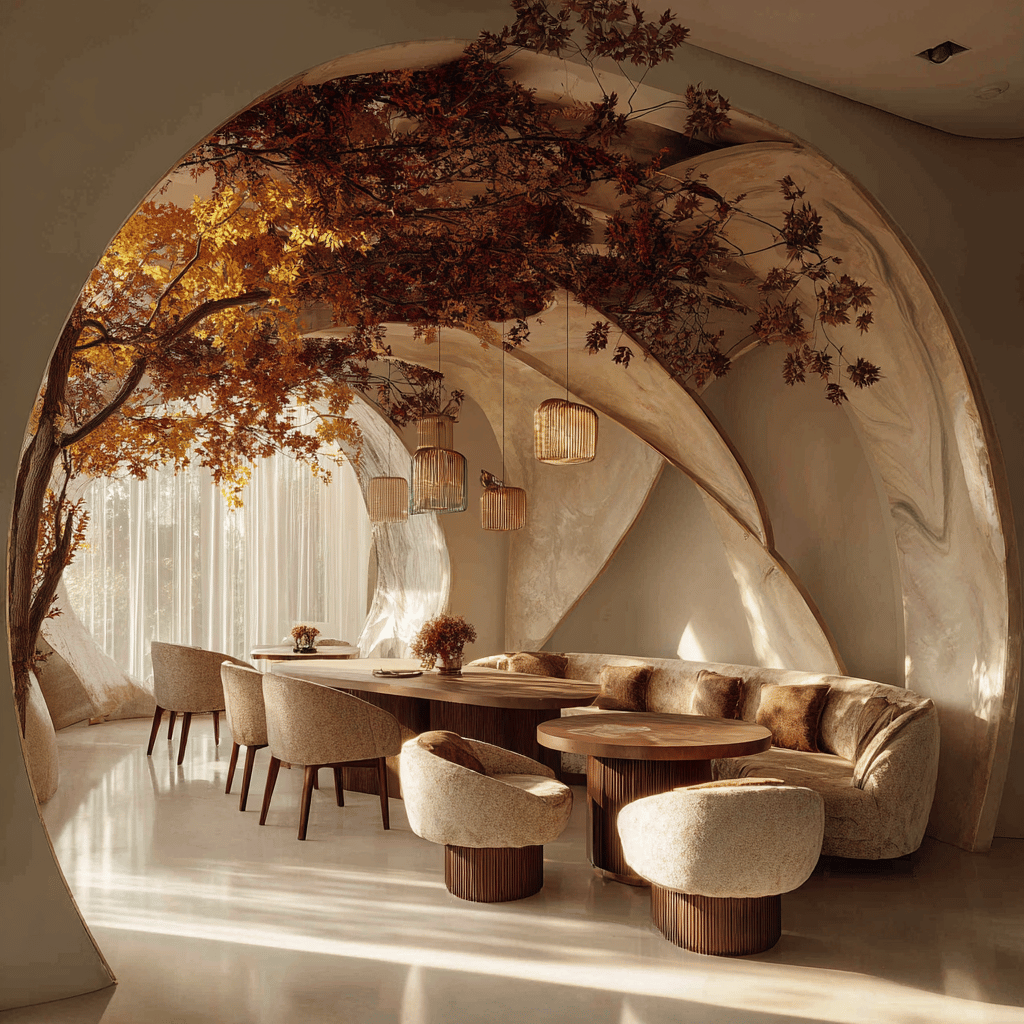
Best Yard Materials for Fall Centerpieces
My yard provides an abundance of materials each fall, and I’ve learned which elements work best for different types of arrangements. Deciduous tree leaves in their full autumn glory form the foundation of most of my centerpieces. I particularly love maple, oak, and dogwood leaves for their stunning colors and interesting shapes.
Branches and twigs add height and structure to arrangements. I collect interesting branching patterns, especially those with unique textures or remaining berries. Birch branches with their distinctive white bark create elegant focal points, while twisted willow branches add dramatic curves.
Seed pods, nuts, and berries provide wonderful textural elements. Acorns are classic fall additions that I scatter throughout arrangements. Pine cones from evergreen trees add rustic charm and work beautifully in both casual and formal settings.
Don’t overlook ornamental grasses and dried flower heads from your perennial garden. These elements add movement and softness to arrangements that might otherwise feel too structured. I particularly love the feathery plumes of pampas grass and the architectural seed heads of echinacea.
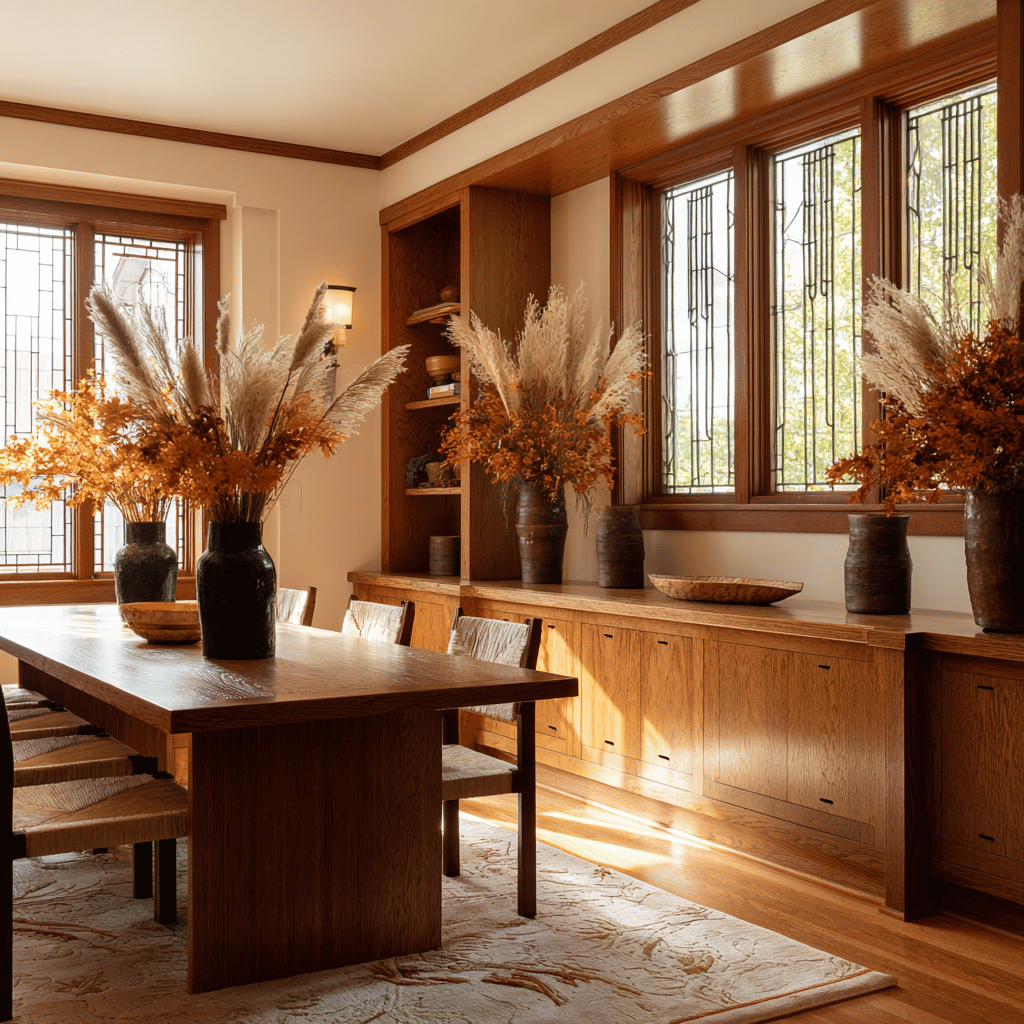
Simple Leaf and Branch Arrangements
One of my favorite go-to centerpieces combines colorful leaves with interesting branches in a low, wide container. I start by selecting a shallow bowl or wooden box that complements my dining room decor.
I begin with the largest elements, placing branches to create the basic structure. I like to vary the heights, with some branches reaching upward while others cascade over the container edges. This creates visual interest and prevents the arrangement from looking too uniform.
Next, I layer in the leaves, focusing on color balance and natural groupings. I’ve found that odd numbers work better than even numbers, so I might place three red maple leaves together, then five golden oak leaves nearby. I tuck the stems under branches or use small amounts of floral foam to secure them.
The beauty of this type of arrangement lies in its organic, collected-from-a-walk appearance. I don’t strive for perfect symmetry. Instead, I aim for balanced visual weight and natural-looking placement that suggests these elements simply fell together beautifully.
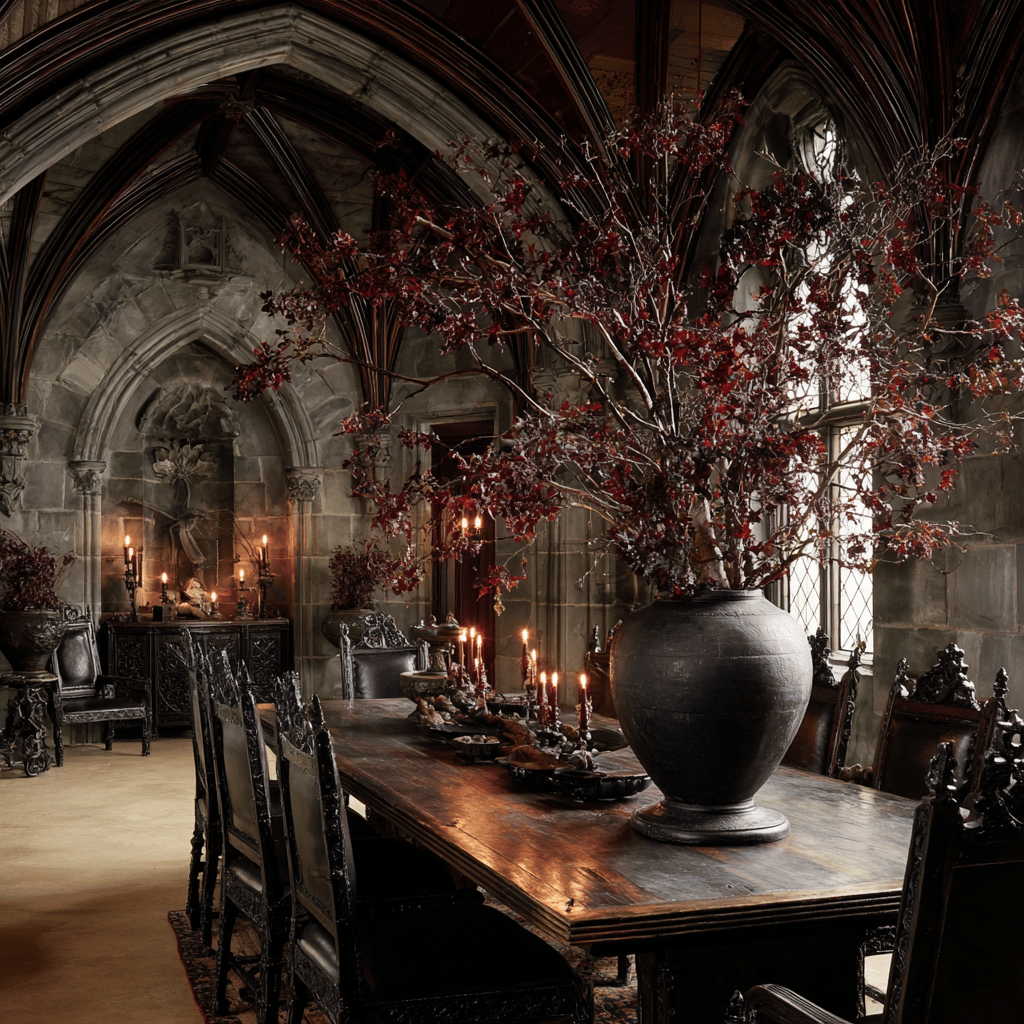
Creating Height with Tall Vessels
Tall vases and containers allow for more dramatic vertical arrangements that make powerful statements on dining tables. I love using these when I’m hosting dinner parties because they create impressive focal points without overwhelming conversation.
For tall arrangements, I start with the longest branches, ensuring they’re proportional to the container. A good rule I follow is making the arrangement about one and a half times the height of the container. This creates pleasing proportions that look intentional rather than accidental.
I layer in medium-height elements like decorative grasses or smaller branching elements. These fill the middle space and create transition between the tall branches and shorter elements near the base.
Finally, I add the shortest elements around the container’s rim. These might include colorful leaves, small clusters of berries, or interesting seed pods. This layering technique creates depth and ensures the arrangement looks full and abundant from every angle.
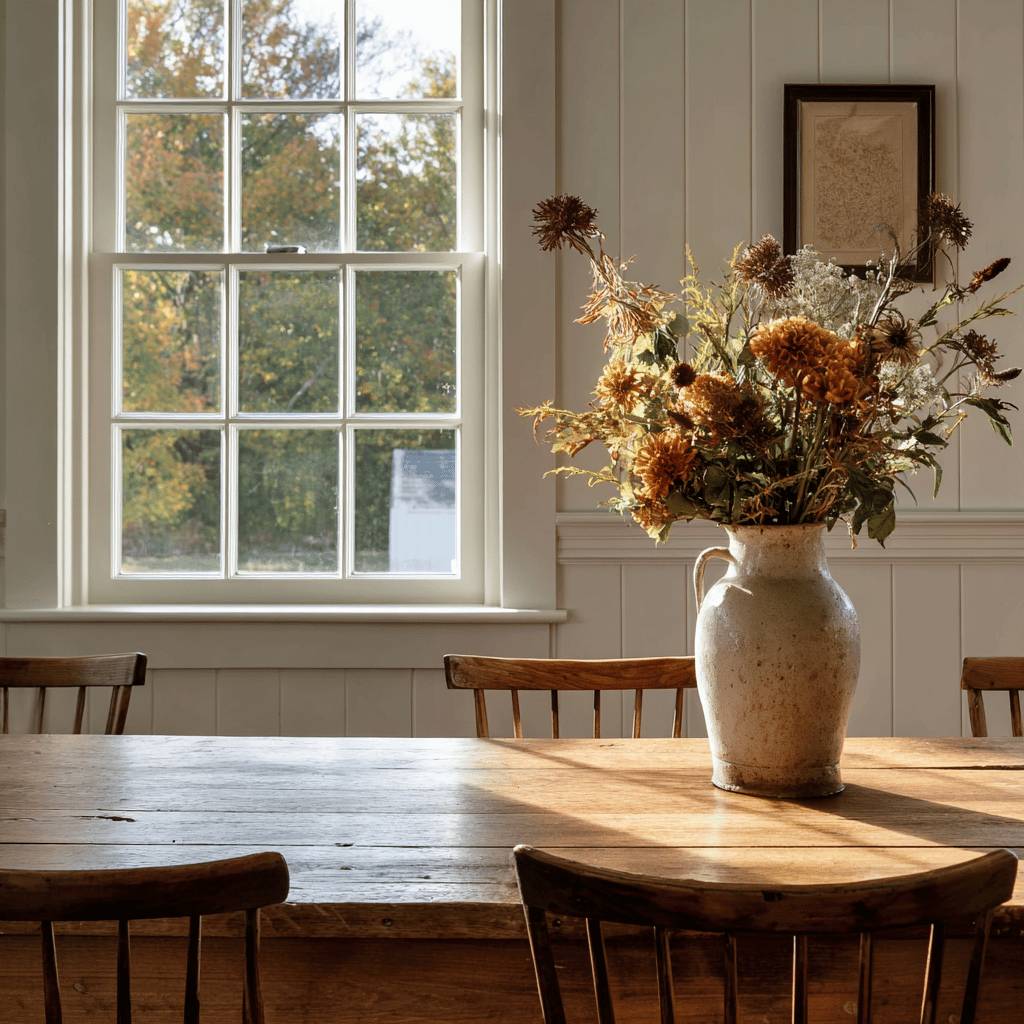
Low Profile Rustic Displays
Some occasions call for centerpieces that don’t obstruct conversation across the table. Low profile arrangements work perfectly for family dinners and casual gatherings where interaction is more important than dramatic impact.
I start these arrangements with a wide, shallow container – often a wooden box, metal tray, or ceramic bowl. The key is choosing something with enough surface area to create an interesting display without building upward.
I create groupings of similar elements, then vary the groupings across the container. I might place a cluster of acorns on one side, balanced by a grouping of colorful leaves on the other. Small branches or interesting twigs can connect these groupings visually.
Candles work beautifully in low arrangements, and I often incorporate pillar candles or votives among the natural elements. The warm glow adds ambiance while highlighting the textures and colors of the yard materials.

Incorporating Seasonal Fruits and Vegetables
My vegetable garden and fruit trees provide additional elements that add both color and symbolic meaning to fall centerpieces. Small pumpkins, gourds, and winter squash create perfect seasonal accents that celebrate the harvest theme.
Apples and pears add beautiful organic shapes and rich colors. I select fruits that are slightly imperfect for decorating purposes, saving the perfect ones for eating. The natural variations in color and shape add to the authentic, garden-fresh appearance.
I incorporate these elements by nestling them among leaves and branches, creating natural-looking groupings. Sometimes I hollow out small pumpkins to use as containers for flowers or candles, which creates charming integrated elements.
These organic additions do have limited lifespans compared to dried materials, so I plan accordingly. For special occasions, the temporary nature isn’t a concern, but for longer-lasting displays, I focus more on preserved elements.

Adding Candles for Warmth and Ambiance
Candles transform any centerpiece from pretty to magical, and I always look for ways to incorporate them safely and beautifully. The warm glow enhances the rich colors of fall materials and creates intimate atmosphere perfect for the season.
I prefer pillar candles in autumn colors – deep oranges, rich burgundies, and warm creams. These colors complement yard materials perfectly and create cohesive color schemes. I often group candles in odd numbers, varying the heights for visual interest.
Safety is always my top priority when combining candles with natural materials. I ensure adequate space between flames and any flammable elements. I use sturdy candle holders and never leave burning candles unattended.
Battery-operated candles offer a safe alternative that still provides warm light. Modern LED candles look remarkably realistic and eliminate fire safety concerns completely. This option works particularly well for arrangements that include delicate dried materials.

Preserving Your Natural Materials
I’ve learned several techniques for extending the life of my yard-collected materials, allowing me to enjoy centerpieces longer and even save special elements for next season.
For leaves, I press them between heavy books or use a flower press. This flattens them but preserves their colors beautifully. Pressed leaves work wonderfully for delicate arrangements or as accents in more substantial displays.
Glycerin treatment works well for branches with leaves. I mix one part glycerin with two parts water and let cut branches soak up the mixture. This keeps leaves supple while preserving their appearance for months.
Air drying works for many materials, particularly grasses and seed heads. I hang them in small bundles in a dry, well-ventilated area away from direct sunlight. Once completely dry, they store well for future use.
Some materials benefit from spray preservatives available at craft stores. These products help maintain colors and prevent deterioration, though they can be more expensive than natural preservation methods.

Color Coordination and Balance
Creating visually pleasing centerpieces requires attention to color relationships and balance. I’ve developed an eye for combinations that work harmoniously and create the emotional impact I want.
I often start with a dominant color – perhaps the brilliant red of maple leaves – then add complementary colors in smaller amounts. Golden yellow accents and deep orange touches create rich, warm palettes perfect for fall entertaining.
Neutral elements like brown branches, tan seed pods, and cream-colored dried grasses provide visual rest points and prevent arrangements from becoming overwhelming. These neutral tones also help bright colors appear even more vibrant by contrast.
I consider the colors in my dining room when planning centerpieces. While I want seasonal impact, I also want arrangements that complement my existing decor rather than clashing with it.
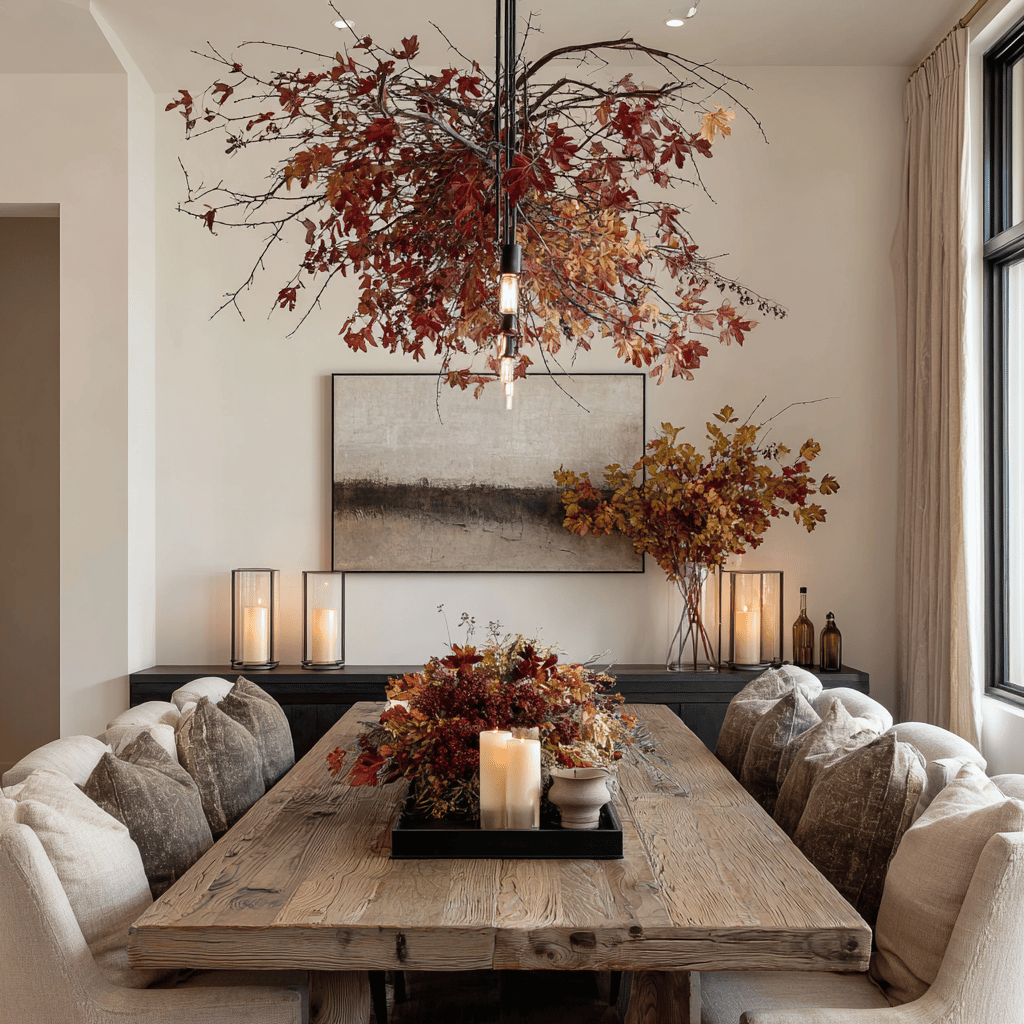
Seasonal Transition Ideas
One advantage of using yard materials is the ability to easily transition arrangements as the season progresses. I start with early fall elements like green leaves mixed with the first color changes, then gradually shift toward deeper, richer tones.
As materials naturally age and change, I embrace these transitions rather than fighting them. Leaves that begin bright orange might fade to lovely golden tones, which creates new opportunities for different color stories.
I often prepare multiple small arrangements that I can swap out as materials change or as my mood shifts. This approach keeps my decor feeling fresh throughout the entire fall season without requiring major time investments.
Late in the season, I transition toward elements that will carry into winter – interesting bare branches, long-lasting seed pods, and evergreen materials that bridge the gap between autumn and winter decorating.
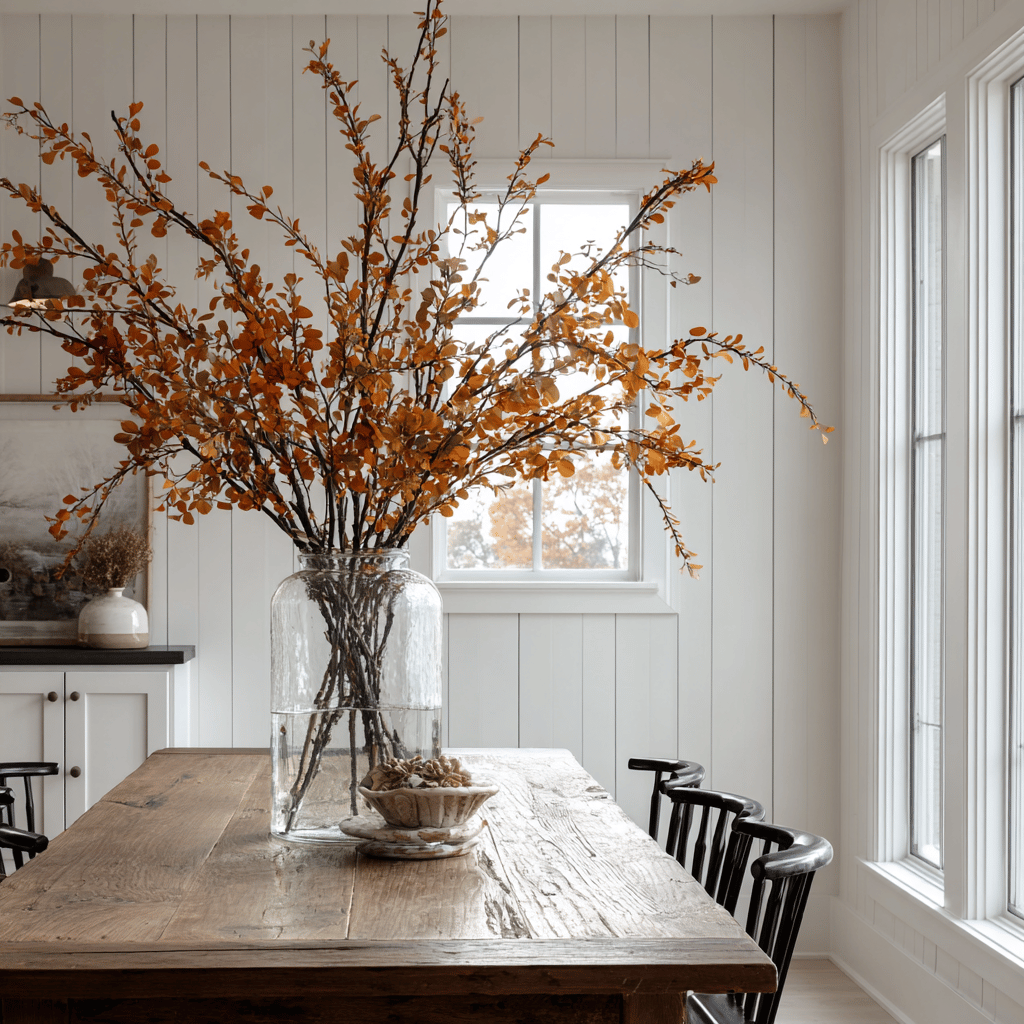
Budget-Friendly Tips
Using yard materials makes fall decorating incredibly affordable, but I’ve discovered additional ways to maximize value and minimize costs even further.
I save containers throughout the year, watching for interesting shapes and sizes at thrift stores and garage sales. A collection of varied containers allows for more creative possibilities without significant investment.
I coordinate with neighbors to share yard materials. My neighbor’s oak tree produces different colored leaves than my maple, so we trade materials for more diverse arrangements. This sharing approach builds community while expanding decorating possibilities.
I collect and dry materials during peak season, storing them properly for use throughout fall and even into winter. Proper storage extends the decorating season significantly and ensures materials are available when inspiration strikes.
Basic supplies like floral foam, ribbon, and candles can be purchased inexpensively during off-season sales. I stock up on neutral-colored ribbons and classic candle colors that work year after year.
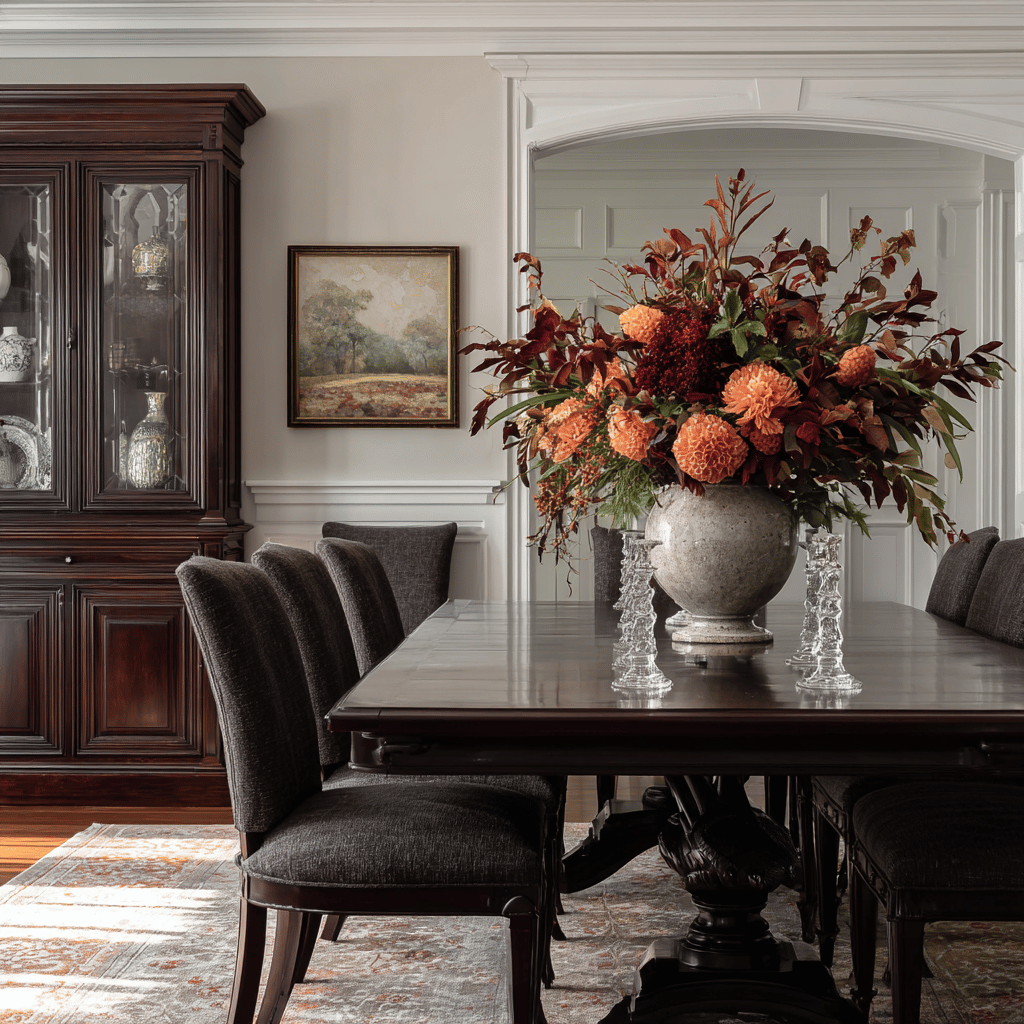
Maintenance and Longevity
Proper care extends the life of yard-material centerpieces significantly. I’ve learned simple techniques that keep arrangements looking fresh longer.
I mist arrangements lightly with water every few days, being careful not to oversaturate. This helps maintain moisture in fresh materials and prevents excessive drying.
I remove any materials that begin to deteriorate quickly, replacing them with fresh elements as needed. This selective maintenance keeps the overall arrangement looking good much longer.
Positioning arrangements away from heat sources and direct sunlight helps preserve colors and prevent rapid drying. I choose locations that provide good viewing while protecting the materials.
I rotate arrangements occasionally to ensure even exposure to light and air circulation. This simple step prevents one side from deteriorating faster than the other.

Conclusion
Creating fall centerpieces with materials from your yard connects you to the natural world in a deeply satisfying way. Every time I walk around my property collecting leaves, branches, and other treasures, I feel more grounded in the season and more appreciative of the beauty surrounding me.
These arrangements bring authentic autumn energy into my home without straining my decorating budget. The time I spend creating them becomes a meditation on the season’s abundance and beauty.
I encourage you to start simply with whatever materials your yard provides. Don’t worry about creating perfect arrangements initially. Focus on enjoying the process and celebrating the unique beauty of your local landscape.
The skills you develop will grow over time, and you’ll find yourself seeing decorating potential in materials you might have previously overlooked. Your yard will become a treasure trove of creative possibilities that change with each season.
Most importantly, these centerpieces created from your yard materials will reflect your personal connection to your home and landscape. They tell the story of your unique place in the world, creating meaningful decor that no store-bought arrangement can match.
If you love home decor and interior design as much as I do, check out these other articles I think you might like.
DIY Fall Garlands: Nature’s Perfect Autumn Decor
Below is a video that when played on your TV can turn your TV into a piece of art. There are hundreds of different videos to choose from.

